Paper cutting, a meticulous and delicate craft, straddles the line between art and craft, evoking a debate that has persisted for centuries.
This enchanting practice involves meticulously shaping paper into intricate designs, blending precision with creativity.
Is it the precision and skill required, the historical significance rooted in various cultures, or the capacity for creative storytelling that elevates paper cutting to the status of art?
Or do its accessibility and utilitarian applications lean more toward the craft spectrum?
This nuanced exploration seeks to unravel the intriguing question of whether paper cutting is an art, a craft, or perhaps a beautiful fusion of both, showcasing its multifaceted nature in the world of visual expression.
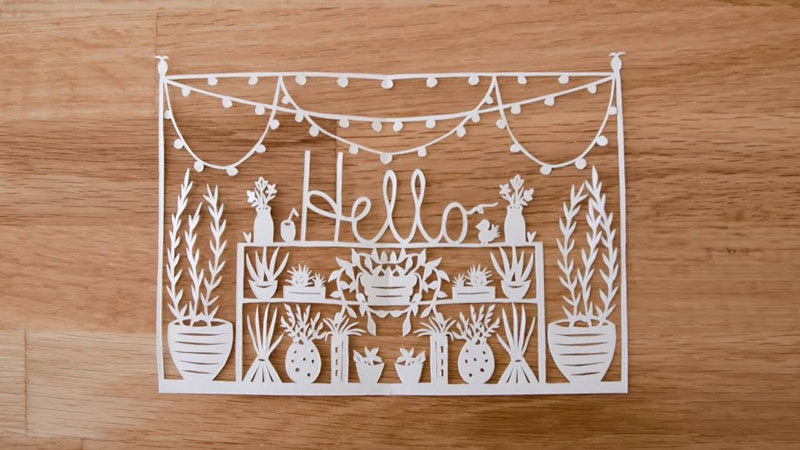
Is Paper Cutting an Art or Craft?
Paper cutting is undeniably an art form that has captivated the imagination of creators and enthusiasts for centuries.
While it may be tempting to categorize it simply as a craft due to its tactile nature and practical applications, paper cutting transcends these boundaries and emerges as a form of artistic expression that melds skill, creativity, and cultural significance.
Historically, paper cutting has deep roots in various cultures around the world. In China, for instance, paper cutting, or “jianzhi,” has been practiced for over a thousand years and is often associated with folk stories, religious symbols, and celebrations.
In Mexico, the art of papel picado is used to decorate altars during the Day of the Dead, weaving intricate patterns that convey the joyous and profound aspects of this cultural celebration.
In Europe, scherenschnitte, the German and Swiss tradition of paper cutting, has also played a significant role in both religious and decorative contexts.
Why Is Paper Cutting an Art?
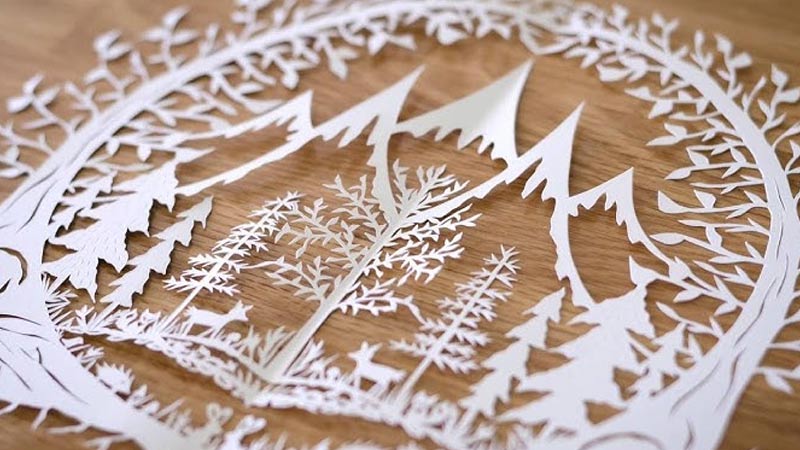
Paper cutting is undeniably an art form, and its significance in the world of visual expression cannot be overstated.
This intricate and delicate craft has deep cultural roots in various parts of the world and has evolved into a unique form of artistic expression appreciated globally.
Here are some compelling reasons why is paper cutting considered a form of art:
Creative Expression
At its core, art is a means of creative expression, and paper cutting offers artists a unique medium through which to convey their ideas, emotions, and perspectives.
Artists use paper cutting as a canvas to explore their imagination and produce visually stunning works of art that reflect their individuality and creativity.
Historical Significance
Paper cutting has a rich historical background, dating back over a thousand years in various cultures.
Its origins can be traced to China, where it was initially used for religious and ceremonial purposes.
Over time, it spread to other parts of Asia and eventually to Europe, evolving into different styles and techniques along the way. This historical depth lends paper cutting an undeniable artistry.
Precision and Skill
Creating intricate paper cuts demands exceptional precision and skill. Artists use sharp knives, scissors, or laser cutting machines to meticulously shape the paper into intricate designs.
The process requires a steady hand, a keen eye for detail, and a deep understanding of the medium’s limitations and possibilities.
Creativity
Paper cutting allows artists to explore their creativity within the constraints of a single material—paper. Artists can manipulate the paper to create detailed scenes, patterns, and storytelling elements.
The interplay of positive and negative spaces, as well as the use of color and texture, adds depth and dimension to the artwork, showcasing the artist’s imaginative abilities.
Cultural Significance
Many cultures have embraced paper cutting as a form of artistic expression. Chinese paper cutting, known as “jianzhi,” has a rich history of storytelling and symbolism.
Similarly, “kirigami” in Japan, “wycinanki” in Poland, and “scherenschnitte” in Germany have their unique cultural significance and storytelling traditions.
These art forms often feature motifs and themes that reflect the culture from which they originate.
Adaptability and Innovation
Paper cutting has not remained static; it has evolved over time to incorporate modern techniques and technology.
Contemporary paper cut artists explore innovative approaches, incorporating elements such as digital design, 3D effects, and mixed media to push the boundaries of the medium.
This adaptability keeps paper cutting relevant and dynamic in the ever-changing world of art.
Accessibility
Unlike many art forms that require costly materials and extensive studio space, paper cutting is relatively accessible.
All that’s needed is paper and a few simple tools, making it an appealing option for aspiring artists and hobbyists. This accessibility has contributed to its popularity as a form of self-expression.
Preservation of Tradition
Paper cutting also serves as a means of preserving cultural traditions and stories.
Many paper-cut artists draw inspiration from ancient folklore, myths, and legends, ensuring that these narratives are passed down through generations in a visually captivating and accessible manner.
Expressive Range
Paper-cutting artists have a broad expressive range. They can create delicate, intricate designs as well as bold, dynamic compositions.
The versatility of paper as a medium allows artists to convey a wide spectrum of emotions and ideas, making it a potent vehicle for artistic expression.
How to Learn Paper Cutting Art
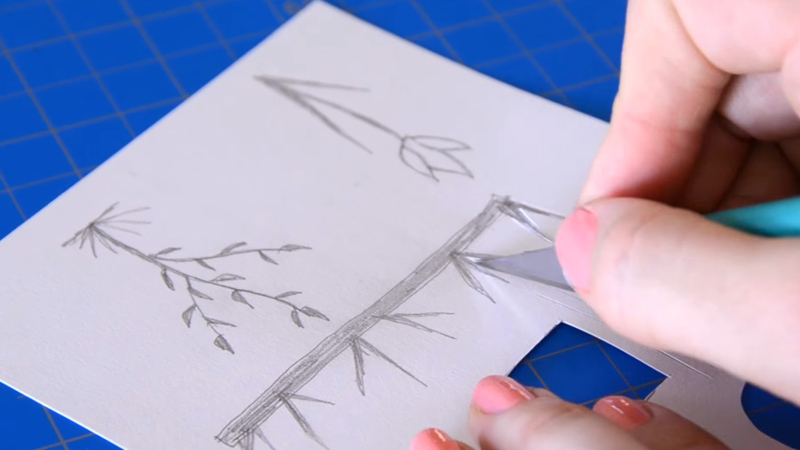
Learning the art of paper cutting can be a rewarding and creative endeavor.
Here are some steps to help you get started with paper cutting:
Gather Materials
Obtain the necessary materials, which typically include paper (choose acid-free paper for longevity), a cutting mat, a sharp craft knife or scissors, a pencil, and a ruler.
You may also want to consider investing in specialized paper-cutting tools, such as precision knives or rotary cutters.
Choose Your Style
Research different styles of paper cutting, as various cultures have their own traditions and techniques.
For example, Chinese paper cutting, Japanese kirigami, or Polish wycinanki have distinct characteristics. Decide which style interests you the most.
Study Tutorials and Books
Start with beginner-friendly tutorials and books on paper cutting. There are plenty of online resources, including video tutorials on platforms like YouTube, and books that provide step-by-step instructions and templates.
Practice Basic Techniques
Begin with basic techniques, such as straight cuts and curves. Familiarize yourself with the tools and get comfortable with handling them safely. Practice cutting on scrap paper to develop your cutting skills.
Templates and Patterns
Utilize pre-made templates and patterns to get a sense of how different designs are created. As you progress, you can start creating your own templates or modifying existing ones to suit your artistic vision.
Explore Design Principles
Learn about design principles such as balance, contrast, symmetry, and focal points. These principles will help you create visually appealing paper-cut artwork.
Experiment with Layers and Colors
Explore the dimensionality of paper cutting by layering different pieces of paper to create depth in your designs. Experiment with colored paper to add vibrancy and contrast to your creations.
Join Workshops and Classes
Consider enrolling in workshops or classes, either in-person or online, to learn from experienced paper-cutting artists. They can provide valuable guidance, tips, and feedback to help you improve your skills.
Practice Regularly
Like any art form, practice is key to becoming proficient in paper cutting. Dedicate time to regular practice sessions, and challenge yourself with increasingly complex designs as you progress.
Share Your Work and Seek Feedback
Share your paper-cut creations with friends, family, and online communities. Constructive feedback can help you refine your skills and gain new perspectives on your work.
Build a Portfolio
As you gain confidence and develop your skills, start building a portfolio of your best paper-cut pieces. A portfolio can be useful if you decide to showcase or sell your artwork.
Experiment and Innovate
Don’t be afraid to experiment and push the boundaries of paper cutting. Incorporate other artistic elements, such as mixed media, to create unique and innovative artworks.
Patience and Perseverance
Paper cutting can be intricate and time-consuming, so patience and perseverance are essential qualities. Don’t be discouraged by initial challenges; instead, use them as opportunities to learn and grow as an artist.
Simple Paper Cutting Art
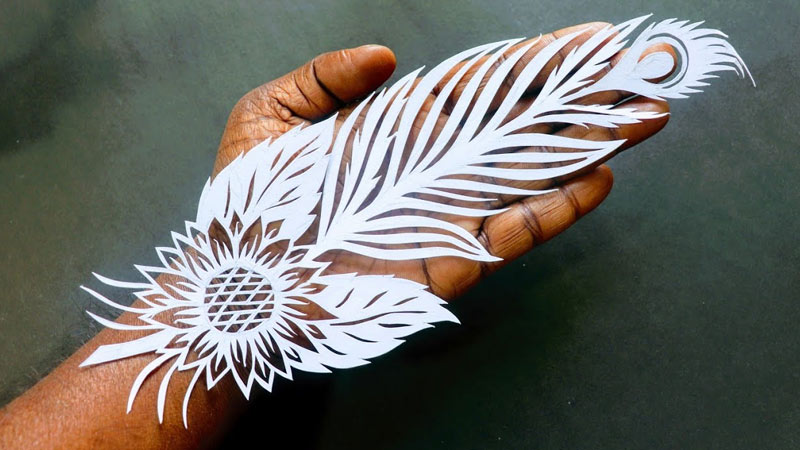
Paper cutting art, also known as paper cutting or paper cutting, is a creative and intricate craft that involves cutting paper to create designs, patterns, or images. It has a long history and is practiced in various cultures around the world.
Here are some simple paper-cutting art ideas and techniques you can try:
Basic Silhouettes
Start with simple silhouette designs. Draw a basic outline of an object or shape on a piece of paper and then carefully cut along the lines. Popular silhouettes include animals, trees, and everyday objects.
Symmetrical Designs
Fold a piece of paper in half and draw half of a symmetrical design along the fold. Then, cut out the design while ensuring the paper remains folded. When you unfold the paper, you’ll have a completely symmetrical design.
Stencils
Create your own stencils by cutting out shapes or letters from paper. You can use these stencils for various art projects, including painting and decorating.
Layered Art
Cut out several layers of paper with different designs or patterns. Stack them on top of each other to create a three-dimensional effect. This technique can be used for creating greeting cards and framed art.
Negative Space Art
Instead of cutting out the main design, cut out the background or negative space around the design. This technique can create striking and unique pieces of paper art.
Kirigami
Kirigami is a form of paper cutting that involves folding and cutting paper to create intricate designs. You can find templates online or create your own. Some common kirigami designs include snowflakes and flowers.
Scherenschnitte
Scherenschnitte is a traditional German form of paper cutting. It often involves intricate designs with delicate patterns. While some designs can be complex, you can start with simpler patterns and work your way up.
Paper Quilling
Paper quilling combines paper cutting and rolling strips of paper to create intricate designs. You can make flowers, animals, and various shapes with this technique.
Collage Art
Cut out various shapes, patterns, and images from different colored papers and magazines. Arrange and glue them onto a larger sheet of paper to create a collage.
Shadow Boxes
Create shadow boxes by cutting out different layers of paper and arranging them in a box frame. This creates a 3D effect with depth and shadows.
Pop-Up Cards
Design and cut out pop-up elements for greeting cards. When the card is opened, the paper-cut elements “pop up” to create a surprise effect.
Paper Snowflakes
Create intricate snowflake designs by folding a square piece of paper and cutting out small shapes along the folded edges. Unfold the paper to reveal a beautiful snowflake.
Paper Cutting Craft
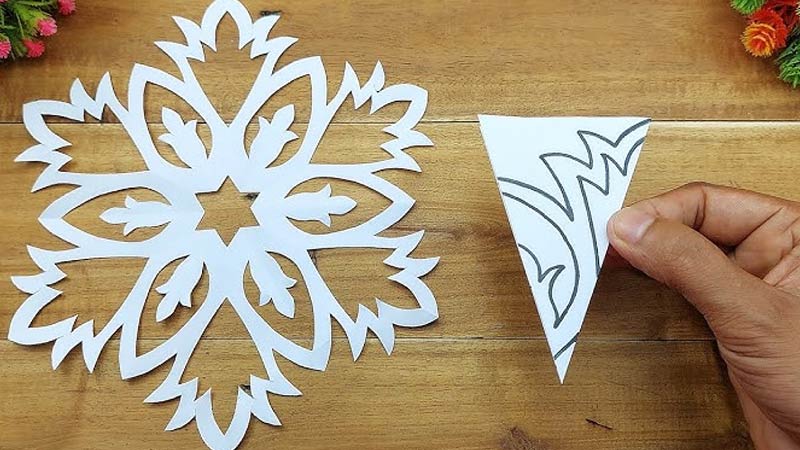
Paper cutting craft, also known as papercraft or paper art, encompasses a wide range of creative projects that involve cutting, folding, and manipulating paper to create various three-dimensional objects, sculptures, and decorations.
Here are some popular paper-cutting craft ideas and techniques:
Origami
Origami is the Japanese art of folding paper to create intricate sculptures and objects. You can make animals, flowers, boxes, and more by following origami instructions or creating your own designs.
Quilling
Paper quilling involves rolling thin strips of paper into coils and then shaping them to form various designs and patterns. You can make quilled jewelry, greeting cards, and framed art.
Pop-Up Cards
Design and craft pop-up cards by cutting and folding paper to create surprise elements that pop out when the card is opened. This technique adds an interactive and fun element to your greeting cards.
Kirigami
Kirigami is a combination of origami and paper cutting. It involves folding and cutting paper to create symmetrical and intricate designs. Kirigami patterns can be used for cards, decorations, and more.
Paper Sculptures
Create three-dimensional sculptures by cutting and layering paper. You can craft animals, architectural models, and abstract art using this technique.
Paper Mosaics
Cut colored paper into small pieces and arrange them to create mosaic-style art. This technique allows for the creation of intricate and colorful designs.
Paper-Cut Silhouettes
Cut detailed silhouettes of objects, animals, or people using sharp scissors or craft knives. Frame these paper-cut silhouettes for wall art or use them as decorations.
Paper Flowers
Craft beautiful and realistic paper flowers by cutting, shaping, and gluing paper petals together. Paper flowers can be used for bouquets, home decor, and special occasions like weddings.
Paper Lanterns
Create decorative paper lanterns by cutting intricate patterns into paper and then assembling them into lantern shapes. Add LED candles for a charming glow.
Paper Jewelry
Design and cut intricate jewelry pieces, such as earrings, necklaces, and bracelets, from colored or patterned paper. Seal them with a clear protective coating for durability.
Decorative Papercuts
Make decorative papercuts to adorn windows, walls, or lampshades. These intricate designs can be inspired by cultural motifs or your own creativity.
Paper Collage
Collect and cut out images, patterns, and text from magazines, old books, or printed materials. Arrange and glue these pieces onto a canvas or paper to create unique collages.
Paper Mobiles
Craft hanging mobiles by cutting and stringing paper shapes together. These mobiles can be used as decorations in nurseries, classrooms, or as general home decor.
Shadow Boxes
Create shadow boxes by cutting and layering paper elements within a box frame. This allows you to craft intricate scenes or 3D artworks with depth and perspective.
Papier-Mâché
Combine paper cutting with papier-mâché to create sculptures, masks, and decorative items. Papier-mâché involves layering paper with glue to form a sturdy structure.
FAQS
Is paper cutting considered a traditional art form?
Yes, Paper cutting is considered a traditional art form in many cultures due to its intricate and skilled nature.
Can paper cutting be considered a form of storytelling?
Yes, paper cutting can be a powerful means of storytelling.
Is there a significant contemporary art movement around paper cutting?
Yes, contemporary artists have embraced paper cutting as a medium for their artistic expression.
Is there a global community or organization dedicated to paper cutting as an art form?
Yes, there are several international organizations and communities dedicated to paper cutting.
To Recap
Paper cutting is a captivating blend of artistry and craftsmanship that transcends conventional definitions.
Its intricate designs and cultural significance position it as both a revered art form and a skilled craft.
The delicate precision required for paper cutting underscores its status as a craft, demanding patience and dexterity.
Simultaneously, the ability to transform a humble sheet of paper into stunning, intricate creations elevates it to the realm of artistry.
Whether evoking cultural heritage, conveying stories, or pushing the boundaries of contemporary expression, paper cutting proves its versatile nature.
In essence, paper cutting defies categorization, forging a unique identity that is unequivocally both art and craft, celebrated for its timeless beauty and cultural significance.
Leave a Reply